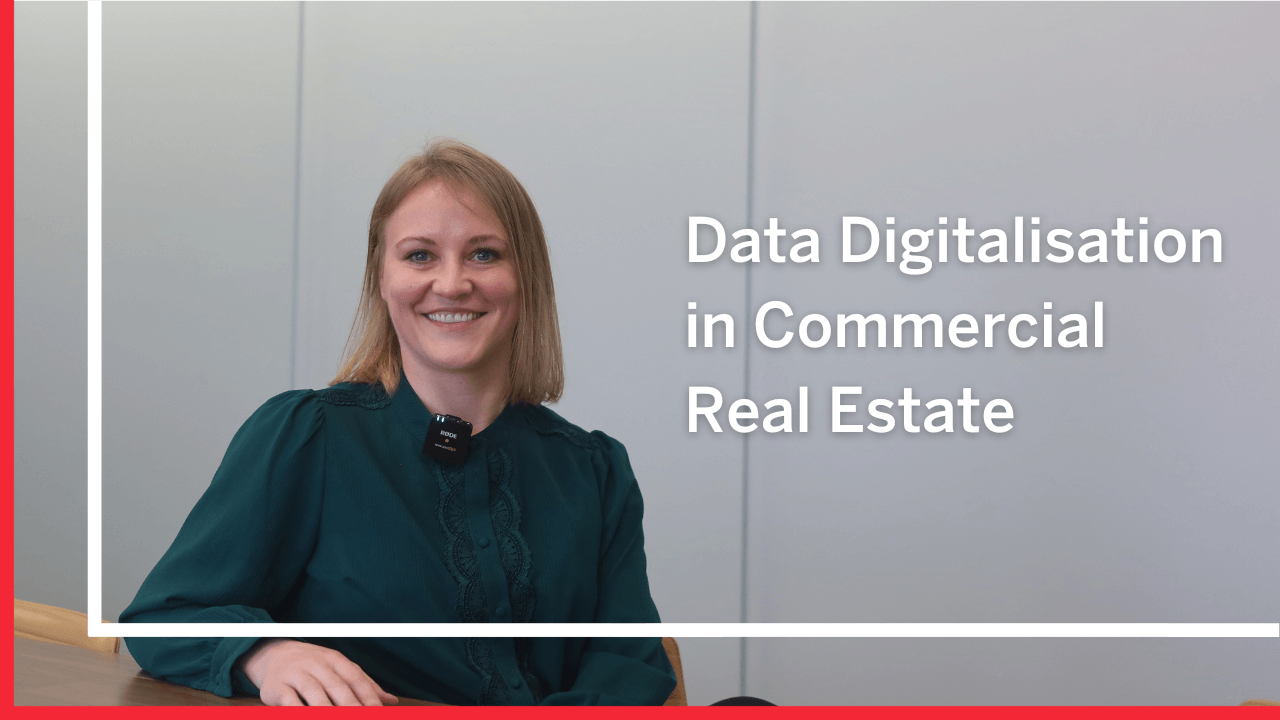Data Digitalisation in Commercial Real Estate: The Foundation
13th May 2025

Article by Ausra Marcelyte, Senior Research Analyst, Research & Consultancy, at Lisney. (amarcelyte@lisney.com)
In today’s rapidly evolving commercial real estate (CRE) sector, buzzwords like artificial intelligence (AI), predictive analytics, and PropTech dominate conversations. These technologies hold immense promise and are often presented as solutions to all industry challenges. Yet, behind the scenes, the real game changer is something less glamorous but critically important: data.
Many established CRE companies have accumulated vast amounts of data on properties and transactions. However, the value of this data lies not just in its volume but in its quality, relevance, and interpretation. Often, much of this data remains trapped in outdated systems, paper files, or even in people’s heads having never been properly documented. Thus, the challenge often lies not in the absence of data but in transforming it into actionable digital formats.
At Lisney, we are in the middle of an ambitious digital transformation. We have recognised that to continue providing the best advice to our clients, we need to rethink how we collect, manage, and use data across the business.
Building a Strong Data Foundation
The allure of AI and predictive models often leads to an excessive focus on these technologies, overshadowing the fact that successful data-driven decision-making depends on accurate and high-quality data. It’s like trying to build a skyscraper on a shaky foundation – sophisticated algorithms and machine learning models can only produce accurate and meaningful insights if they are fed with clean, consistent, and reliable data. In other words, you get out what you put in.
Our research department has always been known for trusted market insights, thorough analysis, and data-driven reporting. As part of the wider digital transformation, we are now extending this approach across the entire business. Our first priority was gathering all of Lisney’s commercial property data in one place – data that had historically existed in different formats and across multiple departments.
After laying the foundation, we moved to the next stage of our transformation: implementing a sophisticated commercial agency software platform. This system brings together all our agency processes in one place, streamlining workflows and enhancing data accessibility. It also improves collaboration across teams, meaning less time spent gathering information and more time advising clients
Breaking Down Silos and Driving Change
One of the biggest challenges in any digital transformation is breaking down data silos. Having consolidated data, we are now focused on breaking down the remaining silos between departments. Teams that historically worked independently – investment, agency, valuations, property management – now benefit from a complete view of the market, enabling them to provide more informed advice to clients. This is a cultural shift as much as a technological one. We are investing in training and change management to bring everyone on the journey.
It is important to note that while we increase our reliance on data, we remain committed to ethical data practices, ensuring client privacy and maintaining the trust that underpins every relationship.
The Human Element in a Data-Driven World
While we are embracing digital tools and data platforms, we know that technology is only as good as the people behind it. We believe the future belongs to professionals who blend data literacy with market expertise and strong interpersonal abilities. These hybrid skills will be crucial for navigating the complexities of a data-driven industry going forward while maintaining the human touch that remains at the heart of real estate industry.
For more research or insights our expert team at Lisney is here to help.
